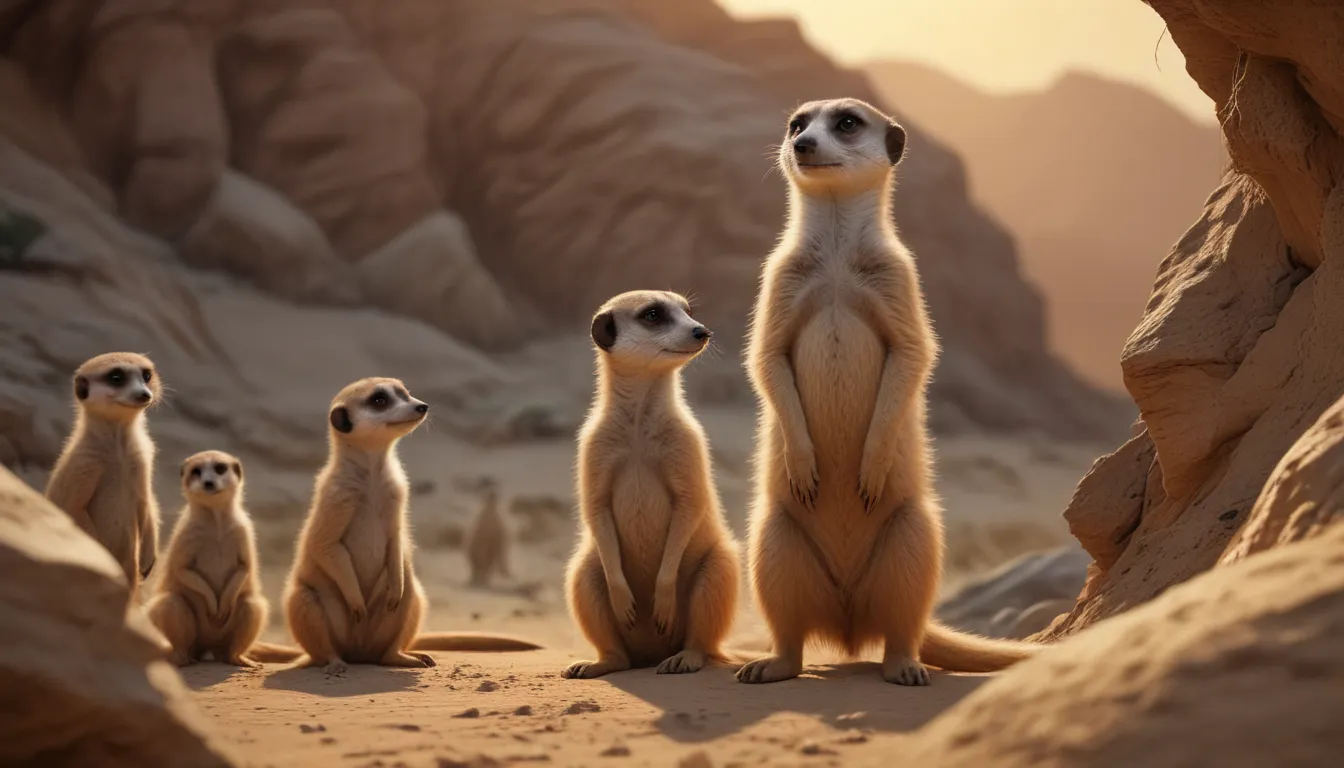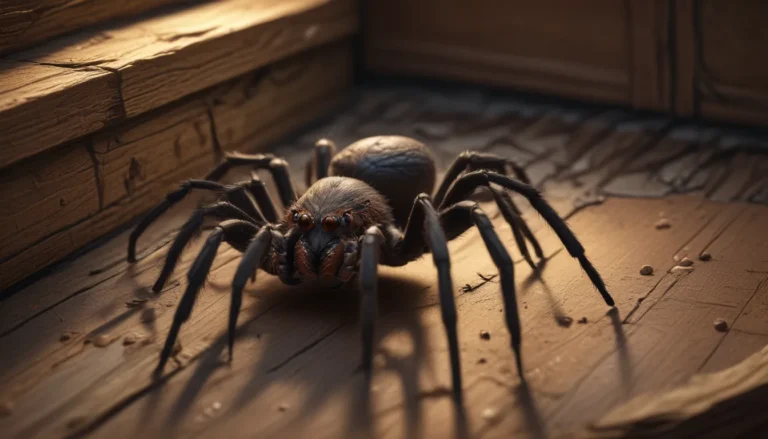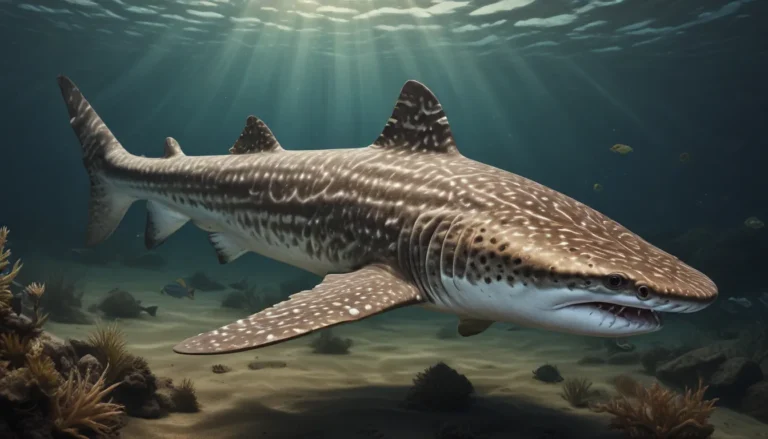The pictures we use in our articles might not show exactly what the words say. We choose these pictures to make you interested in reading more. The pictures work together with the words but don’t take their place. The words still tell you the important facts.
Meerkats, the small, highly social mammals native to the deserts of Southern Africa, have captured the hearts of animal enthusiasts worldwide. These charismatic creatures are known for their iconic upright stance, intricate social interactions, and endearing behavior. From their family-oriented lifestyle to their remarkable hunting techniques, meerkats possess many interesting traits that truly set them apart from other animals.
In this article, we will delve into the world of meerkats and uncover 13 fascinating facts about these captivating creatures. From their social behavior to their hunting strategies and habitat adaptation, we will explore the intricacies of meerkats and what makes them so unique. So, sit back, relax, and get ready to learn more about these adorable animals that never cease to impress with their cuteness and intelligence!
Key Takeaways:
- Meerkats are highly social animals, living in groups with designated roles and responsibilities. They are skilled hunters, engaging in unique foraging behavior, and exhibit cooperative parenting, making them fascinating creatures to study.
- Meerkats have impressive digging skills and a complex matriarchal structure. They are known for their longevity in captivity and are considered symbols of unity, diligence, and family values in various African cultures.
Social Creatures
Meerkats are highly social animals, living in groups called mobs or clans. These clans can include up to 40 individuals and have a complex social structure with designated roles and responsibilities for each member. This social behavior allows them to work together efficiently and thrive in their harsh desert environment.
Native to Africa
Meerkats are native to the deserts and grasslands of southern Africa, including countries like Botswana, Namibia, and South Africa. They have adapted to survive in arid environments and are well-known for their ability to dig intricate burrows where they seek shelter and protection.
Excellent Hunters
Meerkats are skilled hunters, primarily feeding on insects but also preying on small mammals, birds, reptiles, and even scorpions. With sharp claws and keen eyesight, they are formidable predators in their ecosystem. Their hunting techniques and cooperative behavior make them successful in capturing prey.
Unique Foraging Behavior
One of the fascinating behaviors exhibited by meerkats is their unique foraging strategy called “sentinel duty.” While foraging for food, one or more meerkats will stand guard on their hind legs to watch for potential predators, ensuring the safety of the group while others search for food. This cooperative behavior enhances their survival chances in the wild.
Cooperative Parenting
Meerkats are known for their cooperative parenting style, with multiple adults sharing the responsibility of raising the young. Older siblings and non-breeding adults assist the dominant pair in caring for and protecting the offspring, creating a supportive environment for the growing meerkat pups.
Highly Vocal
Meerkats have a diverse range of vocalizations that they use to communicate with one another. These calls serve various purposes, including issuing warnings about predators, coordinating group activities such as foraging or grooming, and maintaining social bonds within the mob.
Impressive Digging Skills
Renowned for their digging abilities, meerkats use their sharp claws and powerful forelimbs to excavate intricate burrows in the sand. These burrows serve as shelters from predators, protection from extreme temperatures, and breeding dens for raising their young. The complexity of these burrows showcases their adaptability and resourcefulness.
Complex Matriarchal Structure
Meerkat groups are typically led by a dominant female known as the matriarch. She plays a pivotal role in decision-making, ensuring the welfare of the group, and coordinating activities within the clan. The dominant male focuses on defending the territory and supporting the matriarch in maintaining order within the mob.
Longevity in Captivity
While meerkats can live up to 12-14 years in the wild, under human care, they have been known to exceed this lifespan, with some individuals reaching up to 20 years of age. The longevity of meerkats in captivity highlights the importance of providing a suitable environment and care for these animals.
Opportunistic Omnivores
Although meerkats primarily feed on insects, they have an opportunistic diet and will consume fruits, seeds, and small vertebrates when available. Their ability to adapt their diet according to environmental conditions showcases their versatility as omnivorous hunters, ensuring their survival in diverse habitats.
Highly Adapted Vision
Meerkats have excellent vision, with their eyes positioned at the front of their heads, allowing for binocular vision. This adaptation helps them spot potential threats or prey from a distance, enhancing their hunting success and ability to navigate their surroundings effectively.
Cultural Symbolism
In various African cultures, meerkats are revered as symbols of unity, diligence, and family values. They are associated with traits such as cooperation, loyalty, and vigilance, reflecting the essence of community and kinship. The cultural symbolism of meerkats highlights their significance as charismatic animals with deep-rooted meanings.
Conclusion
In conclusion, meerkats are truly fascinating creatures with a diverse set of characteristics and behaviors that make them stand out in the animal kingdom. Their social nature, cooperative parenting, impressive digging skills, and longevity in captivity demonstrate their adaptability and resilience in challenging environments. By understanding and appreciating the unique traits of meerkats, we gain a deeper appreciation for the intricacies of the natural world and the diversity of life forms that inhabit it.
Whether you are captivated by their adorable appearance or intrigued by their behavior, meerkats never fail to leave a lasting impression on those who encounter them. As integral members of their ecosystem, meerkats play a vital role in maintaining the balance of populations and contributing to the health of their habitats. Their presence serves as a reminder of the interconnectedness of all living beings and the importance of conserving biodiversity for future generations to enjoy.
Explore the world of meerkats and discover the wonders of these enchanting creatures that continue to amaze and inspire us with their resilience and resourcefulness. Embrace the spirit of unity and cooperation embodied by meerkats as we celebrate their unique place in the tapestry of life on Earth.
FAQs
- How long do meerkats live?
-
On average, meerkats live for about 8-10 years in the wild. However, they can live up to 13 years in captivity.
-
Are meerkats dangerous?
-
Meerkats are not inherently dangerous to humans. They prioritize survival and protecting their group over posing a threat to humans. It is essential to respect their space and refrain from approaching or disturbing them in their natural habitat.
-
Do meerkats make good pets?
-
Despite their cute and charismatic nature, meerkats are not suitable as pets. They have specific social and environmental requirements that cannot be adequately met in a domestic setting. Additionally, meerkats are protected species in many countries, making it illegal to keep them as pets.
-
How do meerkats communicate?
-
Meerkats communicate through a complex system of vocalizations, including specific calls for alerting the group to potential threats, coordinating activities during foraging, and resolving territorial disputes. They also use body language and facial expressions to convey messages within the group.
-
Where do meerkats live?
-
Meerkats are native to the deserts and grasslands of southern Africa, particularly countries like Botswana, Namibia, and South Africa. They have adapted to thrive in arid environments and sandy terrain.
-
Are meerkats endangered?
- Currently, meerkats are not classified as endangered species. However, factors such as habitat loss, climate change, poaching, and competition for resources could pose future threats to their population. Conservation efforts are crucial to ensuring the continued survival of meerkats and their habitats.
As we embark on this journey into the captivating world of meerkats, let us embrace the wisdom and resilience of these remarkable creatures. Through their social bonds, hunting prowess, and adaptability, meerkats exemplify the beauty of life's diversity and the interconnectedness of all living beings. Join us in celebrating the enduring spirit of meerkats and their enduring legacy in the tapestry of nature's wonders.






